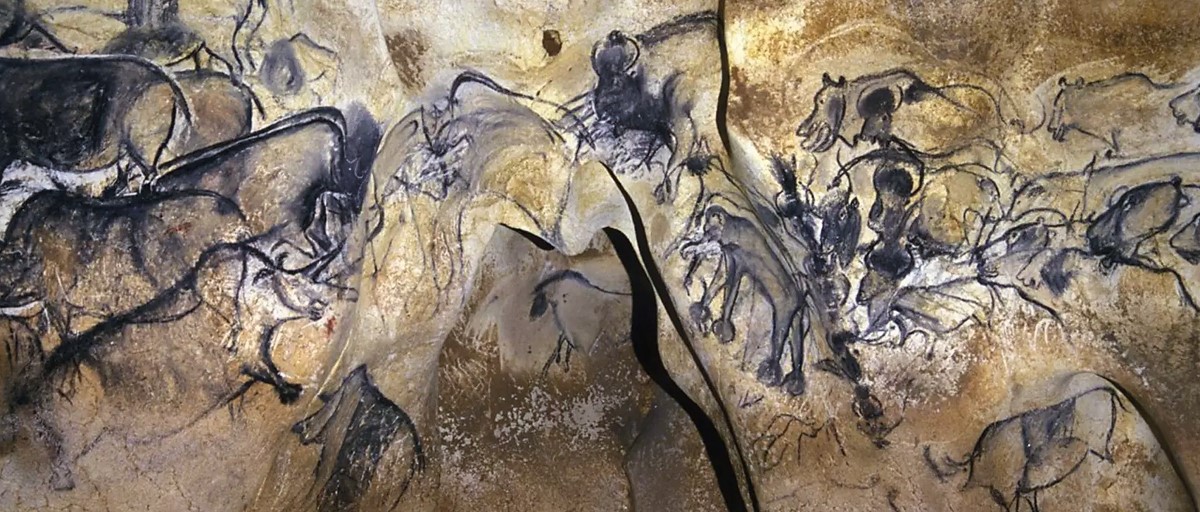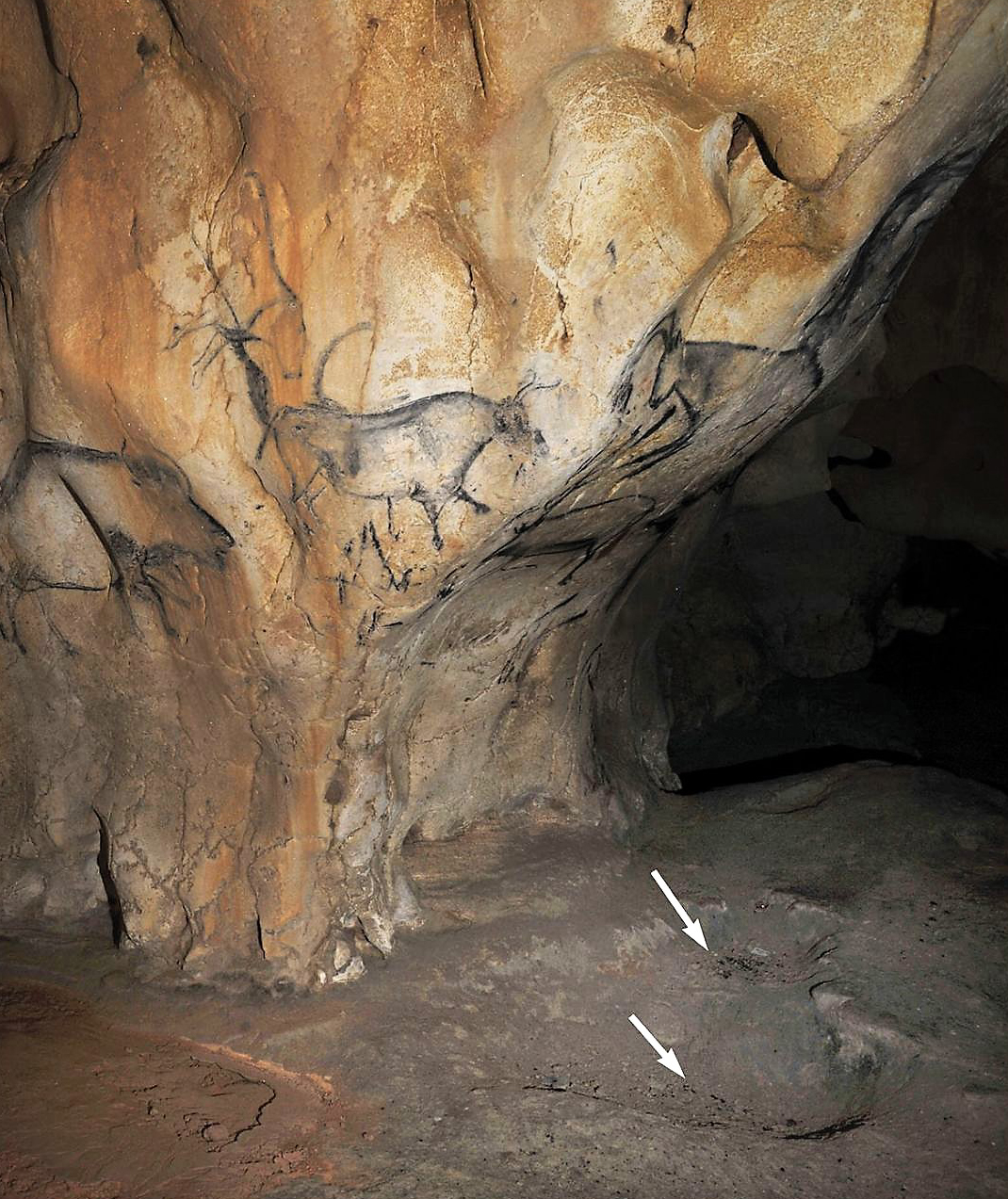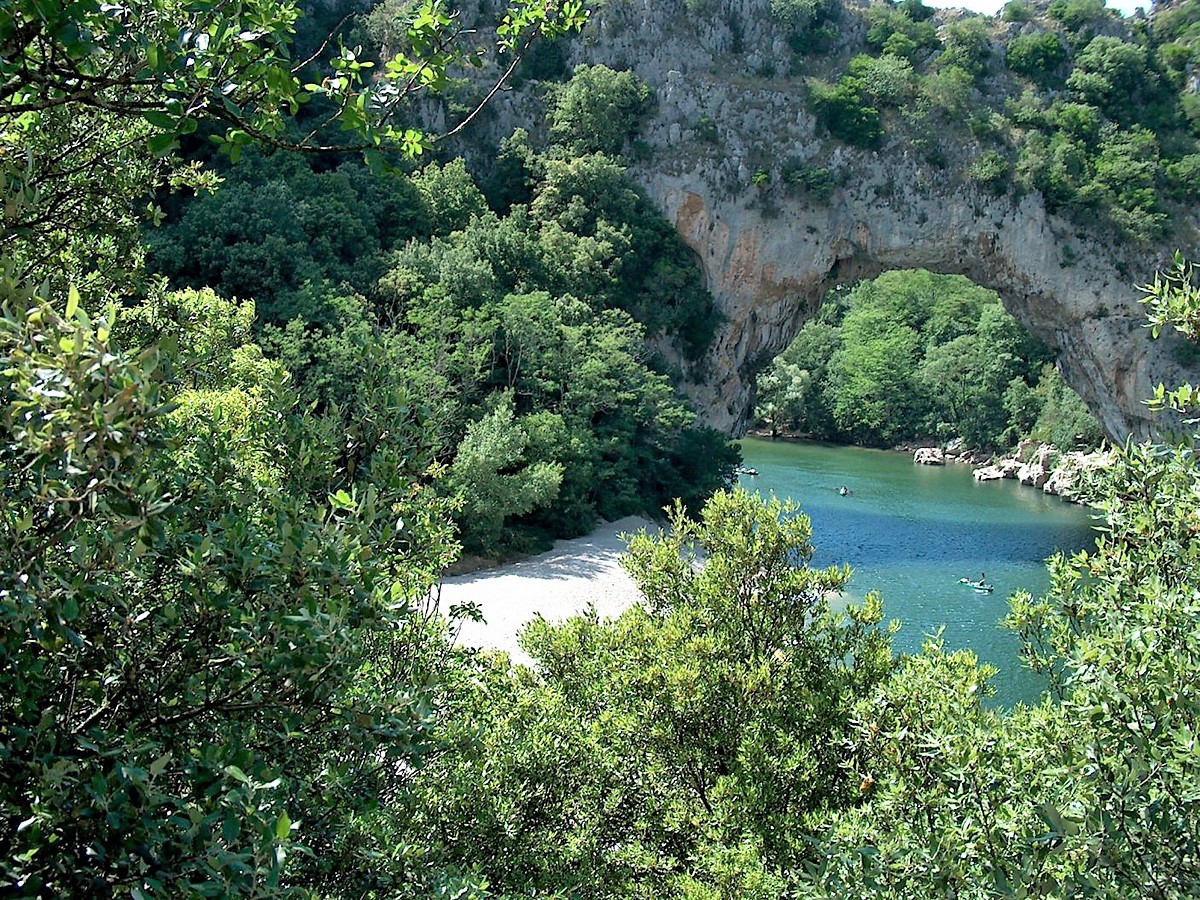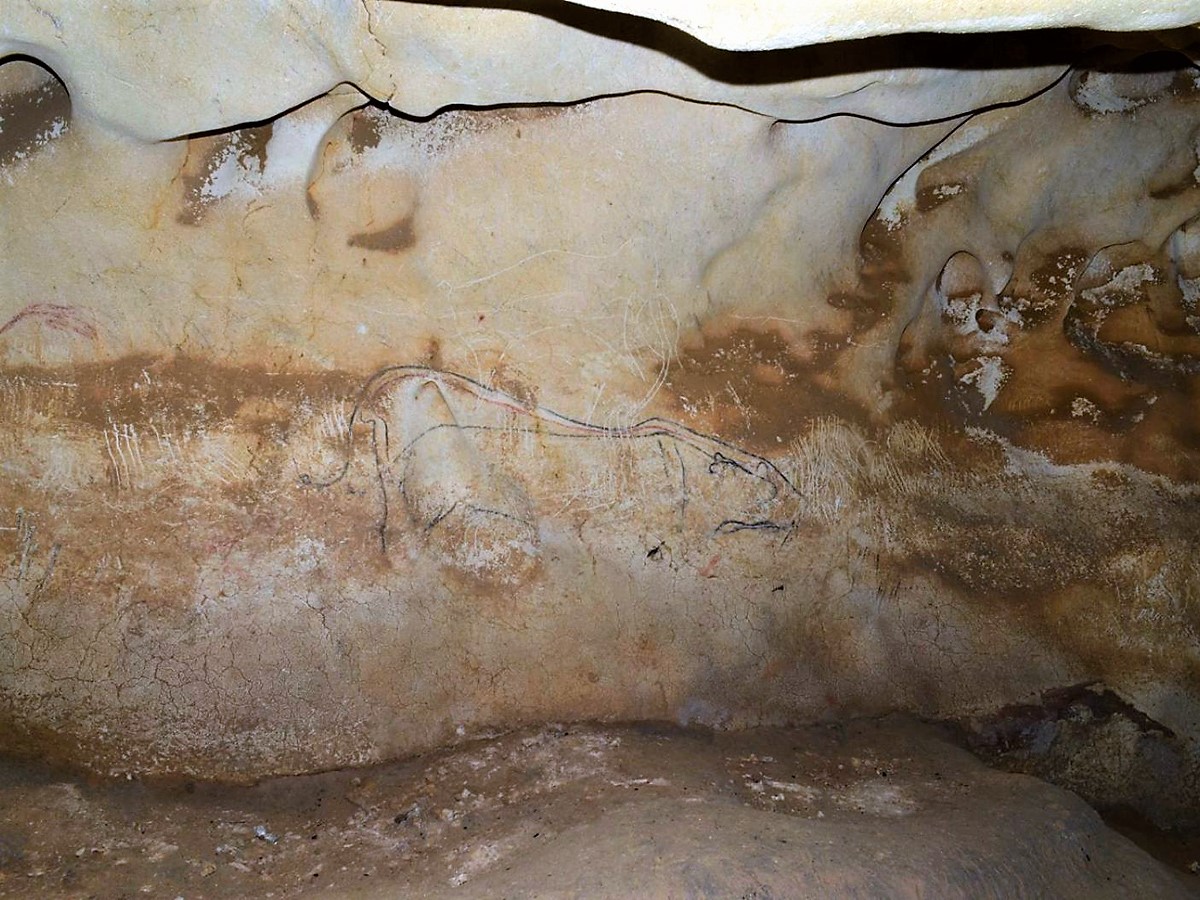


An article by Ruth Schuster on haaretz.com - Ice Age Artists at Chauvet Cave Made Charcoal From Pine to Draw - reports on the exclusive use of pine as one of the few trees to survive the cold, revealing how harsh the conditions were when the art of Chauvet was created up to 37,000 years ago.

A host of animals drawn in charcoal on the walls of Chauvet Cave. Image: C. Fritz/MCC.
Jean-Michael Geneste of the Université de Bordeaux explains that the images in the deep chambers of the Chauvet cave were drawn in charcoal (although in Lascaux manganese oxide was used), whilst those in colour in the forward chambers were done using red ochre. The large number of charcoal images has to mean the artists were producing charcoal in copious amounts just for the purpose of art.
#Chauvet artists made charcoal from pinehttps://t.co/zaKYRrOzzl #RockArt #France #archaeology #Aurignacian pic.twitter.com/OlxXtBA5Xy
— Bradshaw Foundation (@BradshawFND) May 10, 2018
Prehistoric rhinos drawn in charcoal do battle on the walls of Chauvet Cave. Image: C. Fritz/MCC.
A group of researchers has analyzed the charcoal used at Chauvet, some found in hearths. Of 171 samples, all but one (buckthorn) originated in pine, a tree that survives in cold conditions, concludes Isabelle Théry-Parisot of the Côte d'Azur University and colleagues in their paper published recently in Antiquity.
The question is Why did they chose to make charcoal out of pine: choice or necessity?

Charcoal fragments on the cave floor, in the Alcove of Felines in Chauvet Cave. Image: C. Fritz/MCC.
Previous research demonstrated human use of the cave in two phases: during the Aurignacian, 37,000 to 33,500 years ago, and the Gravettian, from 31,000 to 28,000 years ago.
The Aurignacian and Gravettian phases both fell within the last Ice Age, known as the Quaternary glaciation period, which began 2.6 million years ago and is still petering out (based on the definition that the Antarctic ice sheet has existed continuously since then.)
Geneste explains that the ice sheet did extend as far south as Chauvet. It would have been as cold there as it is in Norway today. The use of pine to make charcoal during both phases, each spanning millennia, attests that in both the Aurignacian and Gravittian periods, the people at Chauvet lived in a very harsh climate.

Pont-d'Arc, where Chauvet Cave was discovered after being sealed by rockfall for over 21,000 years. Image: Günter Wieschendahl.
The predilection for pine - were they picking up what lay around, or were they cherry-picking pine and scorning other potential platforms for fire, which they sorely needed for heat, light, to cook, and to make charcoal for art?
Chauvet Cave itself apparently existed in what Théry-Parisot and the group calls a refuge area, which was warmer and more humid than neighbouring areas during the long glacial episodes of the Quaternary.

Cave lions drawn in charcoal manufactured using pine. Image: C. Fritz/MCC.
In the case of Chauvet, it would have been protected from the elements by the Ardeche gorges, which is why it had trees, most of which were pines, which shed branches that the prehistoric hunter-gatherers could conveniently collect and transport to the cave. Though pine predominated the landscape, there were other trees, and default exploitation of the only wood at hand is simplistic.
In short, the researchers believe that pine was used partly because it was present and partly out of choice. It comes down to 'culture' and the choice made by generations of artists - the charcoal from pine worked well.
Visit The Art of the Chauvet Cave:
http://www.bradshawfoundation.com/chauvet/index.php
by Bradshaw Foundation
Monday 30 May 2022
by Bradshaw Foundation
Wednesday 19 January 2022
by Bradshaw Foundation
Thursday 06 January 2022
by Bradshaw Foundation
Monday 06 December 2021
by Bradshaw Foundation
Monday 29 November 2021
by Bradshaw Foundation
Monday 25 October 2021
by Bradshaw Foundation
Monday 12 July 2021
by Bradshaw Foundation
Monday 24 May 2021
by Bradshaw Foundation
Tuesday 20 April 2021
by Bradshaw Foundation
Thursday 01 April 2021
by Bradshaw Foundation
Tuesday 23 February 2021
by Bradshaw Foundation
Thursday 14 January 2021
by Bradshaw Foundation
Friday 18 December 2020
by Bradshaw Foundation
Sunday 06 December 2020
by Bradshaw Foundation
Thursday 26 November 2020
by Bradshaw Foundation
Wednesday 07 October 2020
by Bradshaw Foundation
Monday 30 May 2022
by Bradshaw Foundation
Wednesday 19 January 2022
by Bradshaw Foundation
Thursday 06 January 2022
by Bradshaw Foundation
Monday 06 December 2021
by Bradshaw Foundation
Monday 29 November 2021
by Bradshaw Foundation
Monday 25 October 2021
by Bradshaw Foundation
Monday 12 July 2021
by Bradshaw Foundation
Monday 24 May 2021
by Bradshaw Foundation
Tuesday 20 April 2021
by Bradshaw Foundation
Thursday 01 April 2021
by Bradshaw Foundation
Tuesday 23 February 2021
by Bradshaw Foundation
Thursday 14 January 2021
by Bradshaw Foundation
Friday 18 December 2020
by Bradshaw Foundation
Sunday 06 December 2020
by Bradshaw Foundation
Thursday 26 November 2020
by Bradshaw Foundation
Wednesday 07 October 2020
Friend of the Foundation











